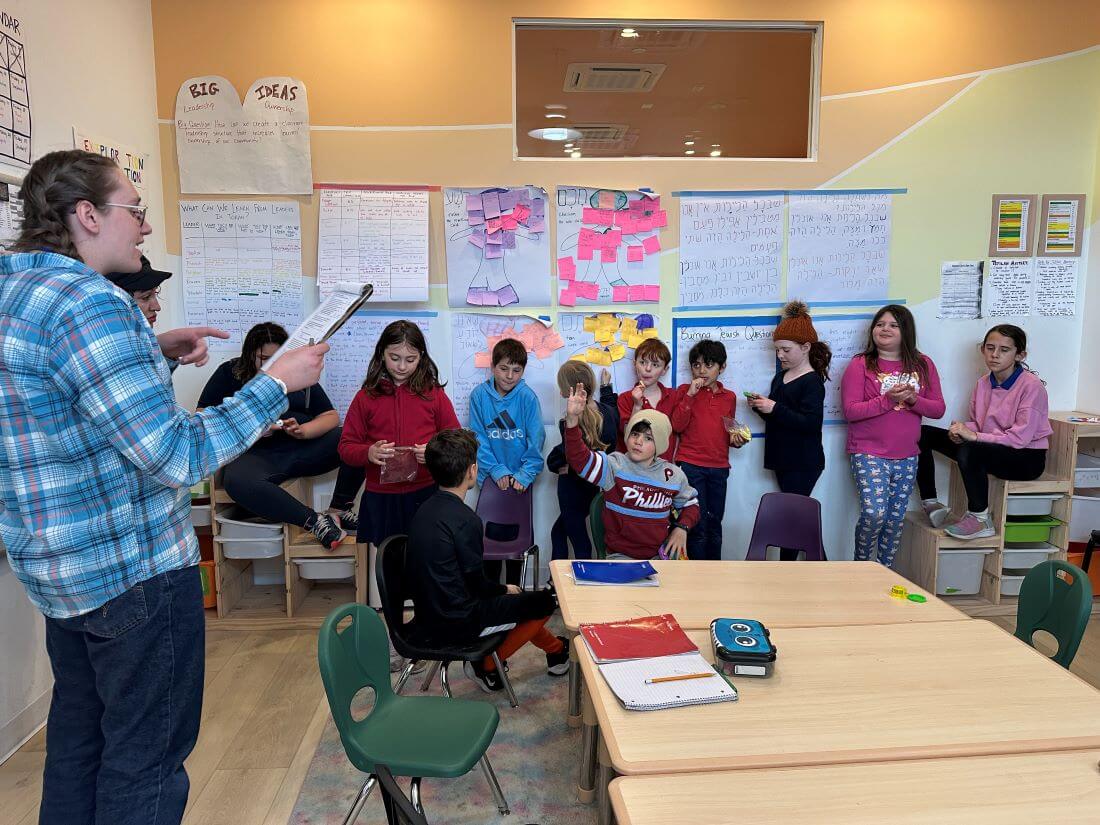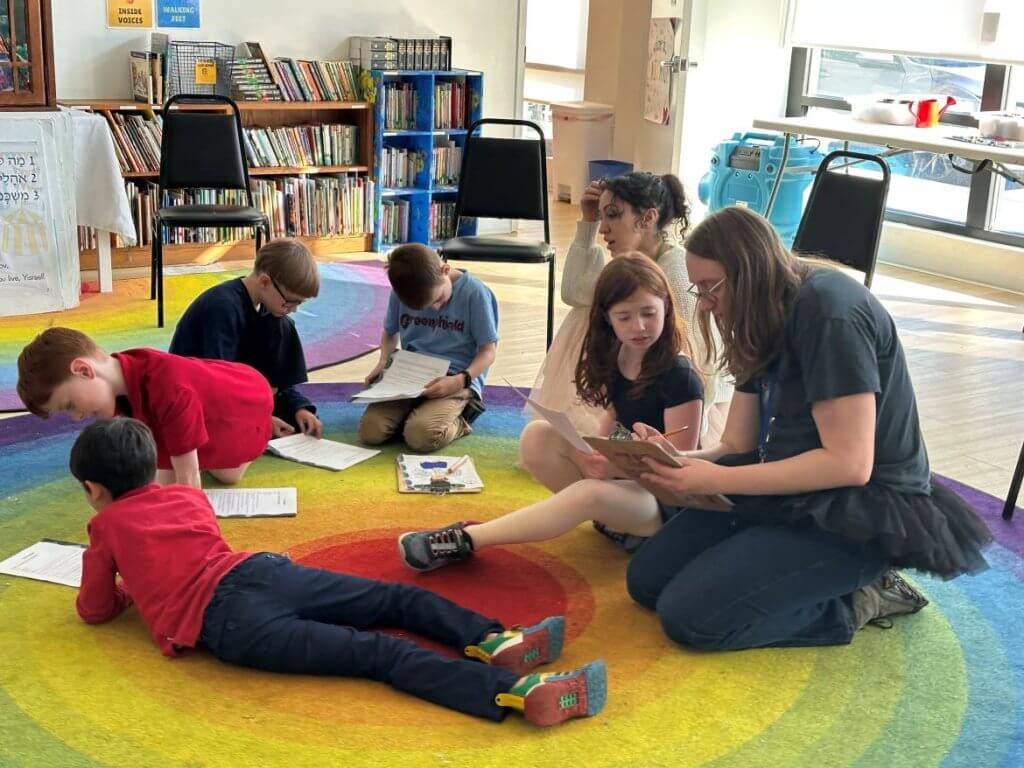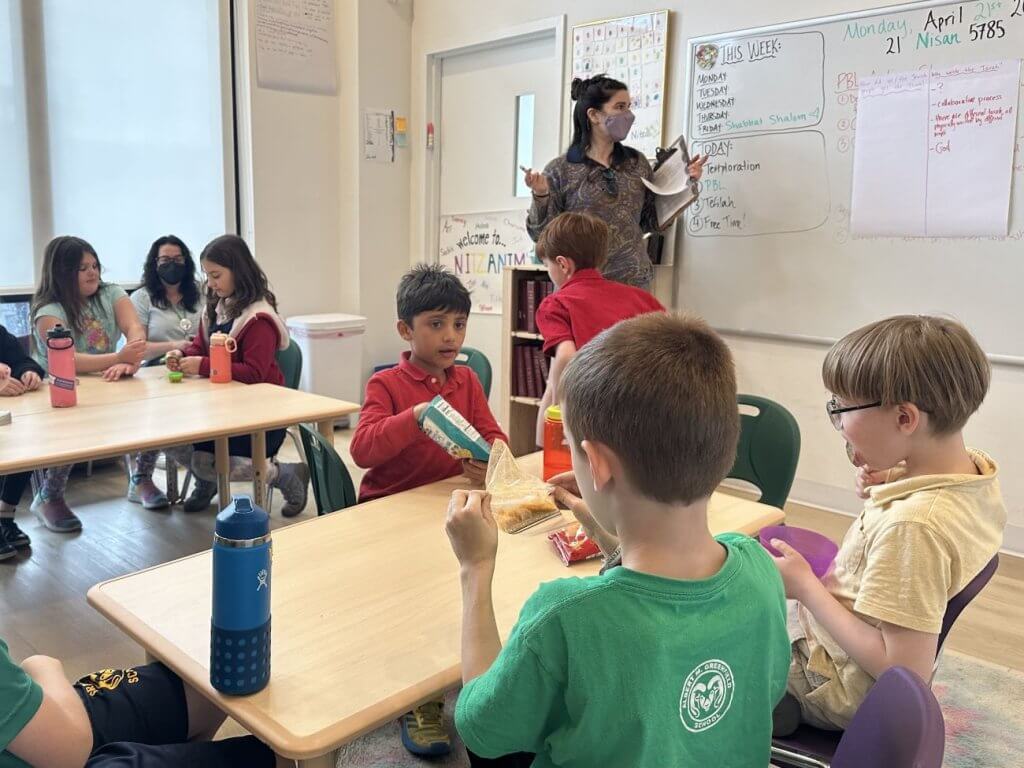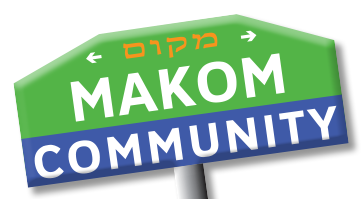
A few months ago, I posted a vlog about how the Nitzanim (3rd and 4th graders) were crying out for agency in the classroom, as well as my attempts to balance giving them that agency while still meeting our learning goals. As we near both the culmination of this project (the development of a classroom student-led leadership structure) and the school year itself, the topic of agency seems to continue to pop up in my classroom in both new and related ways.
The fourth and final unit of study for Makom’s K-4th grade learners this school year focuses on women in Torah, identifying where their voices might be missing, and adding their perspectives to stories that are so often dominated by male voices. Our educator team chose to introduce this unit by beginning with a powerful teaching from Talmud that demonstrates how the Torah is ours to interpret. In this teaching, one rabbi attempts to prove he is right in a dispute by invoking miracles to prove that God is on his side. However, the other rabbis reply by saying “lo bashamayim hi—the matter is not in heaven”. Even if God may agree with this one rabbi, if the majority of the other rabbis interpreting and practicing Jewish law at the time disagree, then the law is in the hands of those practicing and learning it on Earth instead. This story teaches us that as Jewish people, we have the agency to decide how to learn from and interpret our shared Jewish tradition as it grows and evolves in the 21st century.

We’ve spent the last few weeks looking at some of the earliest mythologies told in Torah about the Jewish avot v’imahot (ancestors). When first reading the stories of the imahot (Sarah, Rivkah, Rachel and Leah) many of the learners were shocked and outraged to see how often choices were made for these women by the men in their lives and that the Torah didn’t share their perspectives on these situations! This is where we return to the idea of lo bashamayim hi—as inheritors and interpreters of this tradition, we are encouraged to ask questions about text and provide new answers. We are empowered to think about these women and add their voices to the Jewish canon. Every day of this unit, at the end of our text study, I invite learners to write their questions, comments, and additions to that day’s text on slips of paper. Then I staple them into a paper chain of commentary that not only hangs on the walls of our classroom, but adds to the chain of Jewish wisdom passed down midor lador, from generation to generation
In addition to the agency of adding to the chain of Jewish wisdom, Nitzanim learners are now making decisions about who and how they want to lead their classroom. After spending months studying leaders in Jewish tradition ranging from Moshe to Yosef to Esther and turning those lessons into ideas for leadership roles they will hold in our community, learners are now getting to practice choosing and acting in those roles themselves. These classroom roles range from News Reporters who summarize what we learn every day, to Reminders who help keep educators on track, to Artists who provide the kvutzah (cohort) with visual representations of text as a different way to connect to our learning.

These are hard tasks! It takes a lot of bravery, creativity, and strength to examine both Jewish texts that are thousands of years old and classroom structures set up by educators, notice the gaps in these systems, and add your own voice to help these traditions evolve. However, that is the responsibility of both being a Jewish person and a global citizen—of looking at our traditions, asking hard questions, and pushing them to evolve in ways that meet the needs of our present moment. I hope that by offering these opportunities in the classroom, I can better equip these learners to have the skills and agency to continue this work in every aspect of their lives.
